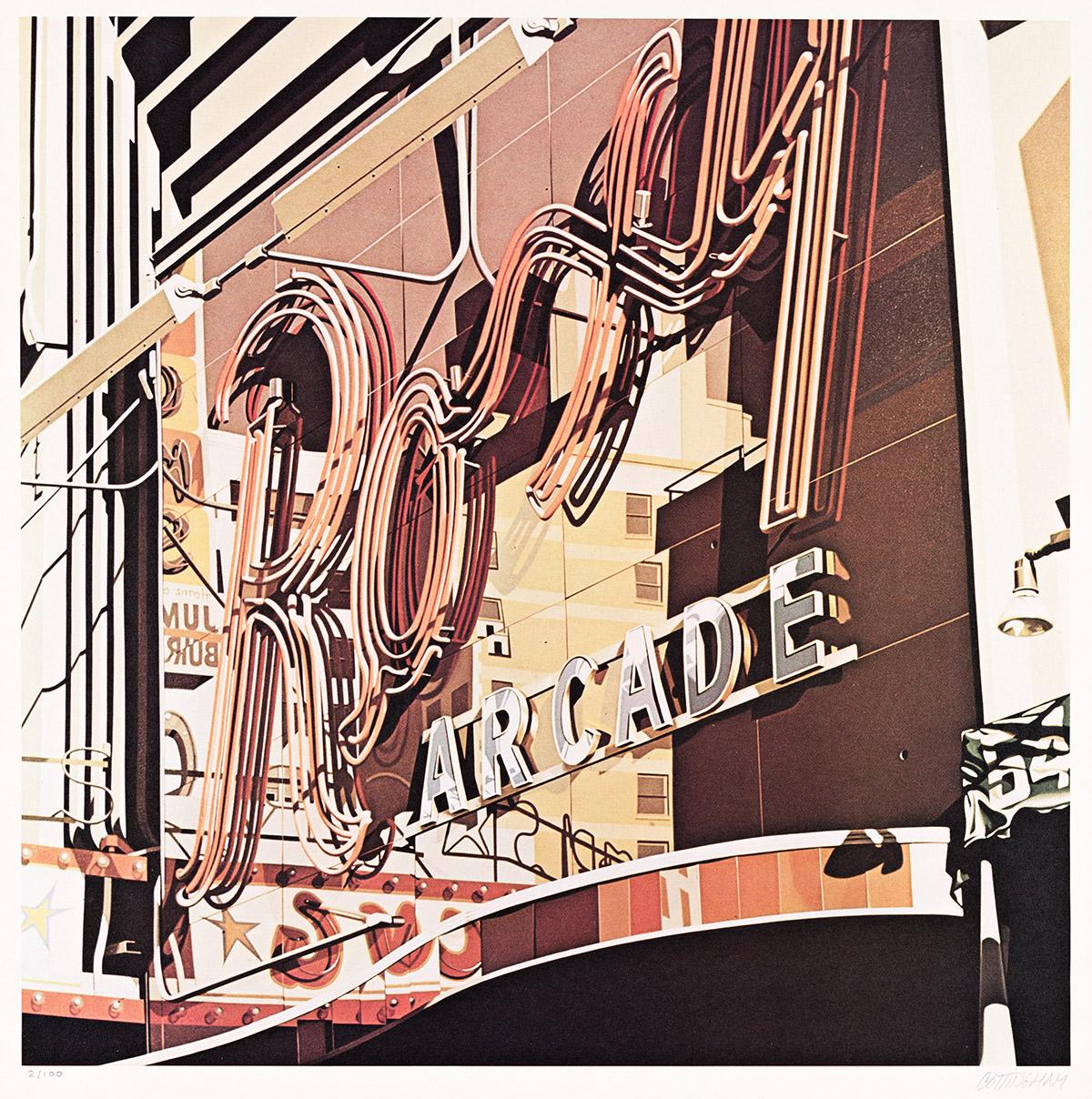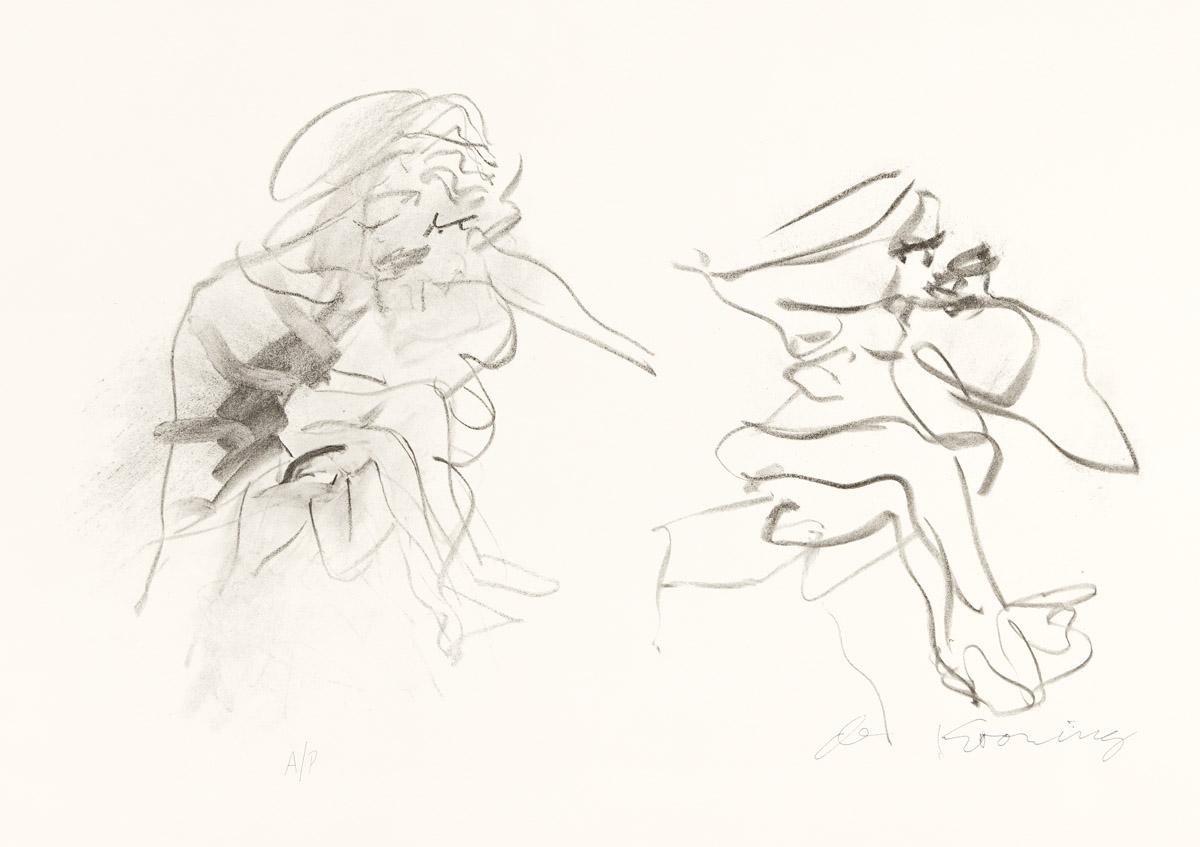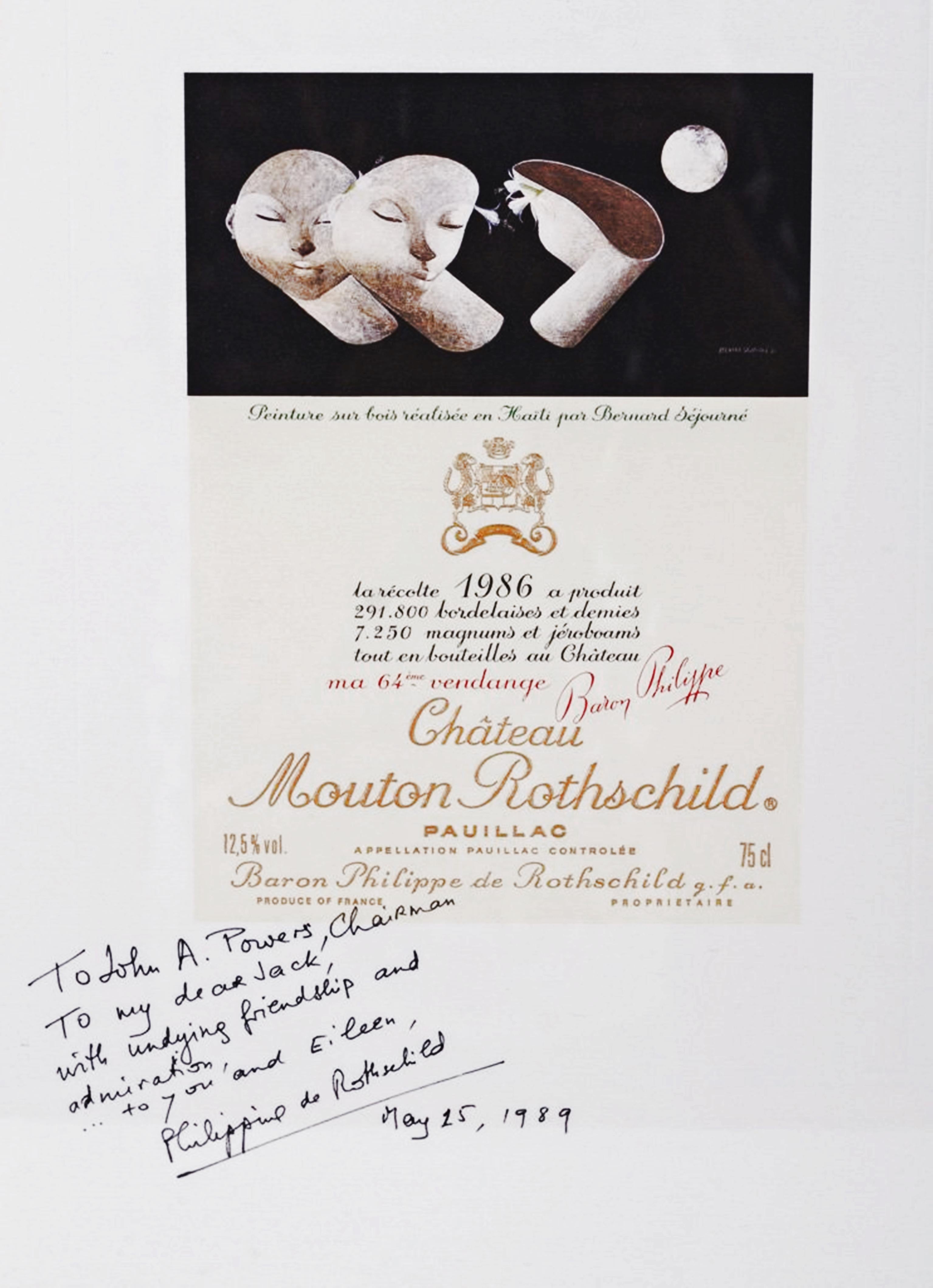Alexander CalderThe original limited edition 1965 Los Angeles County Museum of Art LACMA poster 1965
1965
About the Item
- Creator:Alexander Calder (1898 - 1976, American)
- Creation Year:1965
- Dimensions:Height: 32 in (81.28 cm)Width: 24.75 in (62.87 cm)
- Medium:
- Movement & Style:
- Period:
- Condition:Creasing around margins especially lower left; otherwise in very good vintage condition.
- Gallery Location:New York, NY
- Reference Number:1stDibs: LU1745213963302
Alexander Calder
The American sculptor Alexander Calder is known as the father of the mobile, a moving artwork composed of delicately balanced sculptural forms suspended from the ceiling.
Because Calder's parents, both artists themselves, did not want him to suffer the hardships of trying to make a living in art, they encouraged the young Calder to study mechanical engineering at the Stevens Institute of Technology, in Hoboken, New Jersey. He worked a number of jobs, including as a hydraulic engineer and draftsman for the New York Edison Company, before deciding to pursue an artistic career. He never abandoned his engineering background, however, applying his understanding of gears and moving parts in all his artworks, from mechanical toys like the Cirque Calder (1931) and his revered prints to his free-standing abstract sculptures, called stabiles.
In 1926, Calder moved to Paris and established a studio in the Montparnasse quarter. He began creating the many parts of his famous miniature circus from found materials, such as wire, string, cloth, rubber and cork. Designed to be transportable, Cirque grew to fill five suitcases over the years. Always interested in putting forms in motion, Calder also pioneered a new art form called wire sculptures, which he described as “drawings in space.” Like his famous mobiles, the wire sculptures were suspended so that they turned with any movement of the air, presenting different forms when viewed from different angles.
In the 1950s, Calder returned to his roots in mechanical engineering, creating monumental abstract sculptures that verged on the architectural. He worked from loose gestural drawings like this preparatory sketch for his Man Stabile, from 1966. Throughout his career, he also worked as a set designer for the theater, as well as an illustrator and printmaker, producing vibrant, whimsical drawings for books and journals.
Find original Alexander Calder art today on 1stDibs.
- ShippingRetrieving quote...Ships From: New York, NY
- Return PolicyA return for this item may be initiated within 1 day of delivery.
- Glaspalast Edition poster, Munich, Germany 1996 (Hand Signed by Sean Scully)By Sean ScullyLocated in New York, NYSean Scully Munich 1996 (Hand Signed), 2001 Offset Lithograph poster Hand signed and dated by Sean Scully in 2018 Boldly signed in black marker on the recto. Hand signed by Sean Scul...Category
Early 2000s Abstract Abstract Prints
MaterialsLithograph, Offset, Ink, Permanent Marker
- Chateau Mouton Rothschild Wine Label Signed & inscribed Philippine de RothschildBy Bernard SéjournéLocated in New York, NYBernard Séjourné Chateau Mouton Rothschild Wine Label (Hand Signed & Inscribed), 1989 Wine Label Print Signed “To John A. Powers, Chairman, To my dea...Category
1980s Abstract Abstract Prints
MaterialsLithograph, Offset
- James SIena at PACE poster Hand signed by James Siena complex linear abstractionBy James SienaLocated in New York, NYJames Siena at PACE Gallery, 2019 Offset lithograph exhibition invitation (Hand signed by James Siena) 19 1/2 × 14 1/2 inches Unframed This exquisite fold...Category
2010s Abstract Geometric Abstract Prints
MaterialsOffset, Graphite, Pencil, Lithograph
- Offset lithograph poster (Signed by both Helen Frankenthaler and Aaron Copland)By Helen FrankenthalerLocated in New York, NYHelen Frankenthaler Pro Musica's Contemporary American Choral Music (Hand signed by both Helen Frankenthaler and Aaron Copland), 1982 Offset lithograph poster (Hand signed by Helen F...Category
1980s Abstract Expressionist Abstract Prints
MaterialsInk, Lithograph, Offset
- Vintage Museum Press Kit (National Gallery, LACMA & Dallas Museum)By Roy LichtensteinLocated in New York, NYRoy Lichtenstein Vintage Museum Press Kit (National Gallery, LACMA & Dallas Museum), 1994 -1995 Offset Lithograph brochures, press releases, magazines and a bookmark 12 x 9 inches Un...Category
1990s Pop Art Abstract Prints
MaterialsLithograph, Offset
- Sam Francis McGovern '72 Poster (Hand signed by Sam Francis) Abstract lithographBy Sam FrancisLocated in New York, NYSam Francis McGovern '72 Poster (Hand signed by Sam Francis), 1972 Photo offset poster (hand signed by Sam Francis) Signed in blue ink on the front by Sam Francis with Sam Francis co...Category
1970s Abstract Expressionist Abstract Prints
MaterialsOffset, Lithograph
- Poster for PeaceBy Robert RauschenbergLocated in New York, NYA very good impression of this color offset lithograph with strong colors. Signed, dated and numbered 230/250 in pencil by Rauschenberg. Published by S...Category
1970s Modern Abstract Prints
MaterialsColor, Lithograph, Offset
- RoxyBy Robert CottinghamLocated in New York, NYColor offset lithograph. Signed and numbered 2/100 in pencil by Cottingham. This work is based on the same-titled color screenprint by Cottingham.Category
Early 2000s Photorealist Abstract Prints
MaterialsColor, Lithograph, Offset
- As I Opened Fire Poster, TriptychBy (after) Roy LichtensteinLocated in New York, NYSet of 3 color offset lithographs. The last panel is signed in pencil. Printed by Drukkerij Luii & Co., Amsterdam. Published by the Stedelijk Museum, Amsterdam. This is a reproductio...Category
1960s Pop Art Abstract Prints
MaterialsColor, Lithograph, Offset
- Untitled (Two Figures)By Willem de KooningLocated in New York, NYA very good impression of this scarce offset lithograph on cream wove paper. Artist's proof, aside from the edition of 100. Signed in ink, lower right, and inscribed "A/P" in pencil,...Category
1970s Abstract Expressionist Abstract Prints
MaterialsLithograph, Offset
- Takashi Murakami 'Superflat' exhibition poster (vintage Takashi Murakami)By Takashi MurakamiLocated in NEW YORK, NYTakashi Murakami Superflat Exhibition Poster 1999: Rare 1990s exhibit poster designed by Murakami and published by Marianne Boesky Gallery New York...Category
21st Century and Contemporary Pop Art Abstract Prints
MaterialsLithograph, Offset
- Canadian Post Modern Pop Art Lithograph Vintage Poster Memphis Galerie MaeghtBy Jean-Paul RiopelleLocated in Surfside, FLVintage gallery exhibition poster. The Galerie Maeght is a gallery of modern art in Paris, France, and Barcelona, Catalonia, Spain. The gallery was founded in 1936 in Cannes. The Paris gallery was started in 1946 by Aimé Maeght. The artists exhibited are mainly from France and Spain. Since 1945, the gallery has presented the greatest modern artists such as Matisse, Bonnard, Braque, Miró, and Calder. In 1956, Adrien Maeght opened a new parisian venue. The second generation of “Maeght” artists was born: Bazaine, Andre Derain, Giacometti, Kelly, Raoul Ubac, then Riopelle, Antoni Tapies, Pol Bury and Adami, among others. Jean-Paul Riopelle, CC GOQ (7 October 1923 – 12 March 2002) was a painter and sculptor from Quebec, Canada. He became the first Canadian painter (since James Wilson Morrice) to attain widespread international recognition. Born in Montreal, Riopelle began drawing lessons in 1933 and continued through 1938. He studied engineering, architecture and photography at the école polytechnique in 1941. In 1942 he enrolled at the École des beaux-arts de Montréal but shifted his studies to the less academic école du Meuble, graduating in 1945. He studied under Paul-Émile Borduas in the 1940s and was a member of Les Automatistes movement. Breaking with traditional conventions in 1945 after reading André Breton's Le Surréalisme et la Peinture, he began experimenting with non-objective (or non-representational) painting. He was one of the signers of the Refus global manifesto. In 1947 Riopelle moved to Paris and continued his career as an artist, where, after a brief association with the surrealists (he was the only Canadian to exhibit with them) he capitalized on his image as a "wild Canadian". His first solo exhibition took place in 1949 at the Surrealist meeting place, Galerie La Dragonne in Paris. Riopelle married Françoise Lespérance in 1946; the couple had two daughters but separated in 1953. In 1959 he began a relationship with the American painter Joan Mitchell, Living together throughout the 1960s, they kept separate homes and studios near Giverny, where Monet had lived. They influenced one another greatly, as much intellectually as artistically, but their relationship was a stormy one, fueled by alcohol. The relationship ended in 1979. His 1992 painting Hommage à Rosa Luxemburg is Riopelle's tribute to Mitchell, who died that year, and is regarded as a high point of his later work. Riopelle's style in the 1940s changed quickly from Surrealism to Lyrical Abstraction (related to abstract expressionism), in which he used myriad tumultuous cubes and triangles of multicolored elements, facetted with a palette knife, spatula, or trowel, on often large canvases to create powerful atmospheres. The presence of long filaments of paint in his painting from 1948 through the early 1950s[8] has often been seen as resulting from a dripping technique like that of Jackson Pollock. Rather, the creation of such effects came from the act of throwing, with a palette knife or brush, large quantities of paint onto the stretched canvas. Riopelle's voluminous impasto became just as important as color. His oil painting technique allowed him to paint thick layers, producing peaks and troughs as copious amounts of paint were applied to the surface of the canvas. Riopelle, though, claimed that the heavy impasto was unintentional: "When I begin a painting," he said, "I always hope to complete it in a few strokes, starting with the first colours I daub down anywhere and anyhow. But it never works, so I add more, without realizing it. I have never wanted to paint thickly, paint tubes are much too expensive. But one way or another, the painting has to be done. When I learn how to paint better, I will paint less thickly." When Riopelle started painting, he would attempt to finish the work in one session, preparing all the color he needed before hand: "I would even go as far to say—obviously I don't use a palette, but the idea of a palette or a selection of colors that is not mine makes me uncomfortable, because when I work, I can't waste my time searching for them. It has to work right away." A third element, range of gloss, in addition to color and volume, plays a crucial role in Riopelle's oil paintings. Paints are juxtaposed so that light is reflected off the surface not just in different directions but with varying intensity, depending on the naturally occurring gloss finish (he did not varnish his paintings). These three elements; color, volume, and range of gloss, would form the basis of his oil painting technique throughout his long and prolific career. Riopelle received an Honorable Mention at the 1952 São Paulo Art Biennial. In 1953 he showed at the Younger European Painters exhibition at the Solomon R. Guggenheim Museum in New York City. The following year Riopelle began exhibiting at the Pierre Matisse Gallery in New York. In 1954, works by Riopelle, along with those of B. C. Binning and Paul-Émile Borduas represented Canada at the Venice Biennale. He was the sole artist representing Canada at the 1962 Venice Biennale in an exhibit curated by Charles Comfort...Category
1970s Pop Art Abstract Prints
MaterialsLithograph, Offset
Recently Viewed
View AllRead More
Renowned for His Mobiles, Alexander Calder Was Also Adept at Crafting Modernist Jewelry
There are no sparkling gemstones on this necklace, but its value far exceeds the cost of its materials.
10 Must-Visit American Public Sculptures
Get your dose of Vitamin D while surveying works by the likes of Alexander Calder, Keith Haring and Pablo Picasso.






